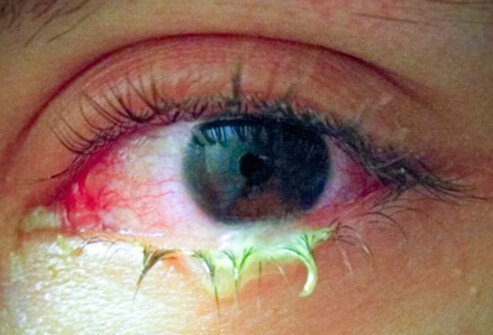Bacterial Conjunctivitis (Pink Eye)
Picture of Bacterial Conjunctivitis (Pink Eye)

Pink eye, or conjunctivitis, is redness and inflammation of the membranes (conjuctiva) covering the whites of the eyes and the membranes on the inner part of the eyelids. The term pink-eye is most commonly used to refer to the infectious (viral or bacterial) type of conjunctivitis, but it may also result from allergic reactions or chemical irritants such as air pollution, smoke, or noxious fumes. The infectious form is very common in children and is highly contagious. Children and adults who develop infectious pink eye should see a doctor to determine whether antibiotic treatment is necessary. Most infectious cases are caused by viruses and will not respond to antibiotics. In these instances, the discharge from the eye is clear and watery and symptoms of a cold may be present. Viral infections last from seven to 10 days. Bacterial pink eye generally results in a large amount of discharge that is green to yellow in color. This discharge can accumulate at night and make opening the eye difficult in the morning. Bacterial pink eye usually lasts three to five days and requires antibiotic eye drops to help the body remove the bacterial infection. Application of warm washcloths to the eye area is also effective in removing discharge. To reduce the chance of spreading infectious pink eye, those affected should avoid touching the eye area and wash their hands frequently, particularly before applying medications to the eye area. Sharing of towels, washcloths, cosmetics, or eye drops can also spread the infection.
Related Topics
Pink Eye (Conjunctivitis) Slideshow Pictures
Pink Eye (Conjunctivitis)
Eye Diseases Slideshow: Recognize These Common Eye Conditions
Reviewed by Andrew A. Dahl, MD, FACS on September 17, 2009
Image Source: Photo courtesy of Tanalai at en.wikipedia
Text: MedicineNet - Retinal Detachment

